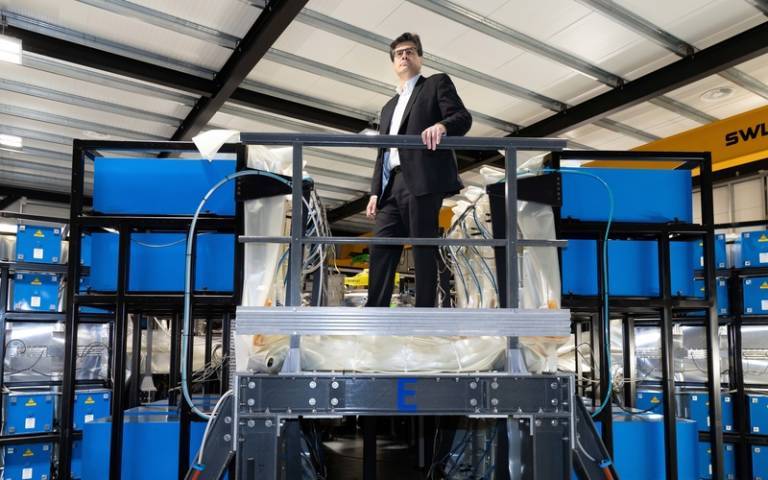Nuclear fusion breakthrough for spinout co-founded by UCL scientist
8 April 2022
First Light Fusion, which was co-founded by UCL’s Head of Mechanical Engineering, Professor Yiannis Ventikos, has declared a world first in nuclear fusion.

The Oxford University spinout has managed to accomplish the reaction by using a unique projectile method for the first time.
The approach used by First Light Fusion has now been verified by the UK Atomic Energy Authority (UKAEA) and involves using a 22-metre gas gun to fire a 100g projectile at 6.5km a second at a fuel pellet containing tritium and deuterium.
It is not only faster and cheaper than traditional fusion approaches, but also offers a simpler pathway to producing fusion energy using existing plant technology.
Professor Ventikos, the Kennedy Professor of Mechanical Engineering at UCL, said: “While achieving fusion in the lab is a tremendous success in its own right, the context is equally important. True to First Light’s rigorous scientific approach, this result is supported by strong and continuously evolving computer modelling. This capability sheds light, in exquisite detail, into the processes that generate these neutrons.
“Such tools are in daily use by First Light’s scientists, helping design unique targets, launchers and amplifiers, navigating the challenging path towards gain and a first-of-a-kind reactor.
“This pursuit of a practical and affordable fusion will give us the clean and abundant baseload power that we so desperately need in our effort to address – and hopefully reverse – global warming.”
First Light Fusion was founded in 2011 and is now developing further experiments including trying to solve one of the main challenges of nuclear fusion - producing more energy than is used to trigger the reaction.
The company hopes to build a 150 megawatt pilot power plant in the 2030s and is already working with Swiss bank, UBS, on development plans – with a final aim of creating multiple power plants.
Here, the process could be repeated every 30 seconds and every pellet could generate enough energy to power the average UK home for more than two years.
CEO and co-founder Dr Nick Hawker (University of Oxford) said: “Out approach to fusion is all about simplicity. Being simple, we believe projective fusion is the fastest path to commercially viable power generation from fusion. We aim for simplicity in the power plant engineering, but we also want to make the fusion process itself as simple as possible.
“The key technology is our target designs. As objects, these are very complex, but the physics is simpler than other fusion approaches; it can be understood and simulated accurately. With this result we have proven our new method for inertial fusion works and, more importantly, we have proven our design process. The design used to achieve this result is already months out of date.
“As soon as we reach the maximum with one idea, we invent the next, and that incredible journey of discovery is what is so exciting.”
In February, First Light Fusion raised $45million (£34million) from backers including Tencent.
Links
- Professor Yiannis Ventikos’s academic profile
- UCL Mechanical Engineering
- UCL Engineering Science
- First Light Fusion
- University of Oxford
Image
- Professor Yiannis Ventikos, credit First Light Fusion
Media contact
Poppy Danby
Email: p.danby [at] ucl.ac.uk
 Close
Close

